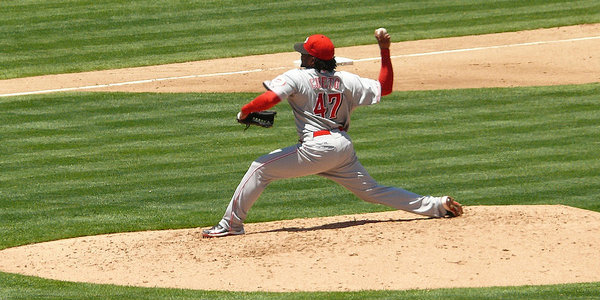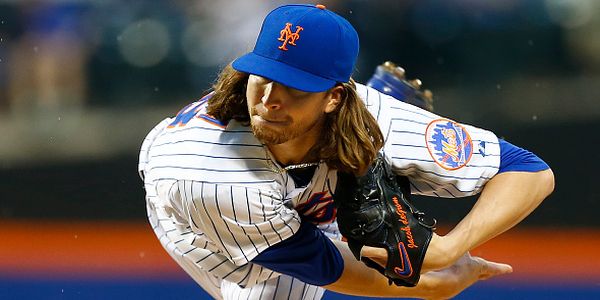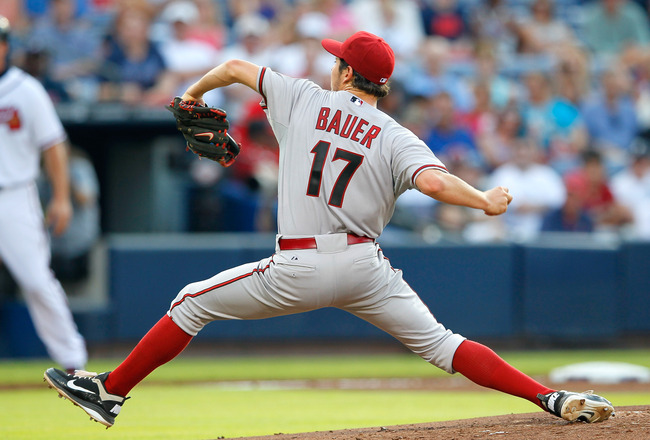2014 Fantasy Baseball: The Starting Pitcher Market — NL Central

The starting pitcher market has been going through some adjustments over the past several seasons. Offense is becoming less and less prominent which means more and more starting pitchers are putting up solid numbers. The NL Central is the fifth division we have profiled in the past week and we are noticing that fantasy owners can easily fill their squads with pitchers with SIERAs below 4.00. For those that are unaware, SIERA is considered by the industry to be the best estimate of what a pitcher’s ERA should be. For more information on how it is calculated feel free to click on the link.
We will be dividing the starting pitchers into three separate tiers. The first tier includes pitchers with at least 60 innings and a SIERA below three. The second tier includes pitchers with SIERA scores between three and four. The final tier includes pitchers with SIERA scores above four. Additionally, we will include several metrics that help explain why a pitcher’s SIERA and ERA are different in addition to numbers that go into calculating SIERA.
Before we get started though, I thought I would include some leagues averages for all of the relevant numbers we will use. I hadn’t included those before and that was probably an oversight on my part. Including the league averages gives us a frame of reference to compare everyone’s numbers to. The league averages are all according to Fangraphs as of June 21st.
ERA: 3.81
SIERA: 3.81
SO/9: 7.75
BB/9: 3.06
BABIP: .295
LOB%: 73.1
|
INN |
BABIP |
LOB% |
SO/9 |
BB/9 |
ERA |
SIERA |
|
|
108.0 |
.212 |
80.0 |
9.25 |
2.17 |
1.92 |
2.84 |
It is easy to get lulled into the old school line of thinking. People in the old school often thought that the great pitchers naturally were more difficult to hit and somehow always came up clutch when runners were on base. We could always throw in anecdotal evidence to prove the point, but the truth of the matter is that numbers always seem to find a way of returning to the norm. If we want evidence of this we could look at the very best pitchers of the last twenty years and look at their numbers.
|
BABIP |
LOB% |
SO/9 |
BB/9 |
|
|
.291 |
74.7 |
10.61 |
3.26 |
|
|
.279 |
75.9 |
10.04 |
2.42 |
|
|
.281 |
72.3 |
6.06 |
1.80 |
|
|
.284 |
74.6 |
8.55 |
2.89 |
Yes, all of these pitchers had BABIPs and strand rates slightly better than the league average. Yet some of them were closer to average than others and yet were all extremely successful. The biggest factor in their success was not their ability to avoid giving up hits on balls in play or in stranding a higher percentage of base runners. The biggest key was their strikeout to walk ratios. All of them had ratios of at least three to one with one (Pedro Martinez) having a four to one ratio.
Similarly, Johnny Cueto has a ratio higher than three to one and that is the reason why he is being successful. He is having an excellent season. but he isn’t having a historic season (in spite of the current ERA). He will end up coming back to pack and with the numbers of tier two starters available you might be able to get a premium position player in exchange for Cueto right now.
|
INN |
BABIP |
LOB% |
SO/9 |
BB/9 |
ERA |
SIERA |
|
|
97.0 |
.303 |
73.5 |
8.35 |
2.69 |
2.60 |
3.31 |
|
|
84.1 |
.345 |
65.3 |
8.86 |
3.74 |
5.12 |
3.92 |
|
|
89.1 |
.273 |
76.6 |
8.56 |
1.91 |
3.02 |
3.19 |
|
|
90.1 |
.335 |
74.2 |
8.07 |
2.89 |
4.68 |
3.54 |
|
|
92.1 |
.297 |
73.1 |
6.43 |
1.95 |
3.80 |
3.47 |
|
|
91.2 |
.266 |
80.9 |
7.07 |
2.75 |
3.34 |
3.72 |
|
|
84.1 |
.252 |
79.4 |
8.00 |
2.88 |
5.02 |
3.97 |
|
|
87.2 |
.289 |
78.1 |
6.88 |
2.26 |
2.98 |
3.62 |
|
|
102.0 |
.251 |
71.6 |
6.35 |
1.50 |
3.09 |
3.81 |
|
|
93.1 |
.285 |
69.6 |
7.04 |
3.28 |
3.47 |
3.85 |
|
|
76.2 |
.307 |
77.8 |
8.10 |
2.93 |
3.64 |
3.55 |
|
|
72.1 |
.308 |
69.9 |
9.58 |
4.48 |
4.60 |
3.68 |
|
|
100.1 |
.253 |
79.2 |
8.16 |
1.88 |
2.15 |
3.20 |
|
|
90.1 |
.278 |
76.8 |
8.27 |
2.59 |
2.79 |
3.51 |
|
|
91.1 |
.296 |
75.9 |
8.08 |
3.45 |
3.15 |
3.90 |
As we have seen through the first five editions of this study, the second tier is by far the most plentiful, so working your way through this mine field is dreadfully important. Not all tier two pitchers are created equal. Some of them are performing like tier one starters at the moment while others are performing like tier three pitchers. Teams are currently looking at pitchers they may want to deal or trade for and you should be doing the same.
Simply put, if you have a tier two starter that is performing like a tier one starter, now is the time to consider dealing them for position players or depth on your pitching staff. Guys like Michael Wacha, Jeff Samardzija, and Adam Wainright are prime examples of pitchers that likely will see their numbers come back to the pack. Samardzija in particular will be a hot item in real baseball as well as fantasy baseball. Some people will buy into him because he will undoubtedly be a part of a better team down the stretch.
On the flip side, there are a number of pitchers that are currently in the weeds that will likely bounce back in the second half. Edwin Jackson, Homer Bailey, Marco Estrada, and Francisco Liriano don’t look like much now, but all of their numbers indicate they should be better than what they are right now. If they are owned, you could likely pay less than a dollar to get them on your squad and some of them will be available via waivers/free agency.
|
INN |
BABIP |
LOB% |
SO/9 |
BB/9 |
ERA |
SIERA |
|
|
84.1 |
.296 |
68.9 |
7.36 |
3.31 |
4.48 |
4.23 |
|
|
88.2 |
.243 |
82.6 |
5.58 |
2.23 |
3.05 |
4.14 |
|
|
94.0 |
.281 |
62.7 |
6.70 |
3.06 |
4.02 |
4.34 |
|
|
81.0 |
.253 |
68.4 |
6.11 |
3.11 |
4.67 |
4.30 |
|
|
91.0 |
.257 |
79.7 |
6.33 |
4.05 |
3.56 |
4.72 |
One of the fun things about baseball is the unpredictable. Statistics can explain and predict a lot, but there are always outliers and Aldredo Simon is one of those. He has ten wins and an ERA just over three. Unfortunately, that performance can’t continue. Out of all of the numbers that are key, strikeout rate is the most crucial. If you don’t miss bats you can’t sustain success for very long. If you picked up Simon early on, pat yourself on the back and turn around and deal him as soon as you can.
On the flip side. I have a little more faith in Shelby Miller because the key with him is control. His walk rate is a little higher than normal, but that is something a pitcher can more easily turn around. Both rates are worse than they were a year ago. Simon has the best walk rate of his career, but his strikeout rates have been higher as a relief pitcher.
The rest of the tier three arms are what they are. In past seasons, guys like Travis Wood and Matt Garza would be prominent fantasy arms. They log a lot of innings and can put up good numbers in the right situation. However, they are perfect examples of how the game is changing. Now, they really shouldn’t be a prominent member of anyone’s fantasy team. Unfortunately, with the subtle shift in the balance of power between pitchers and hitters, some fantasy owners haven’t caught up with the changes.




